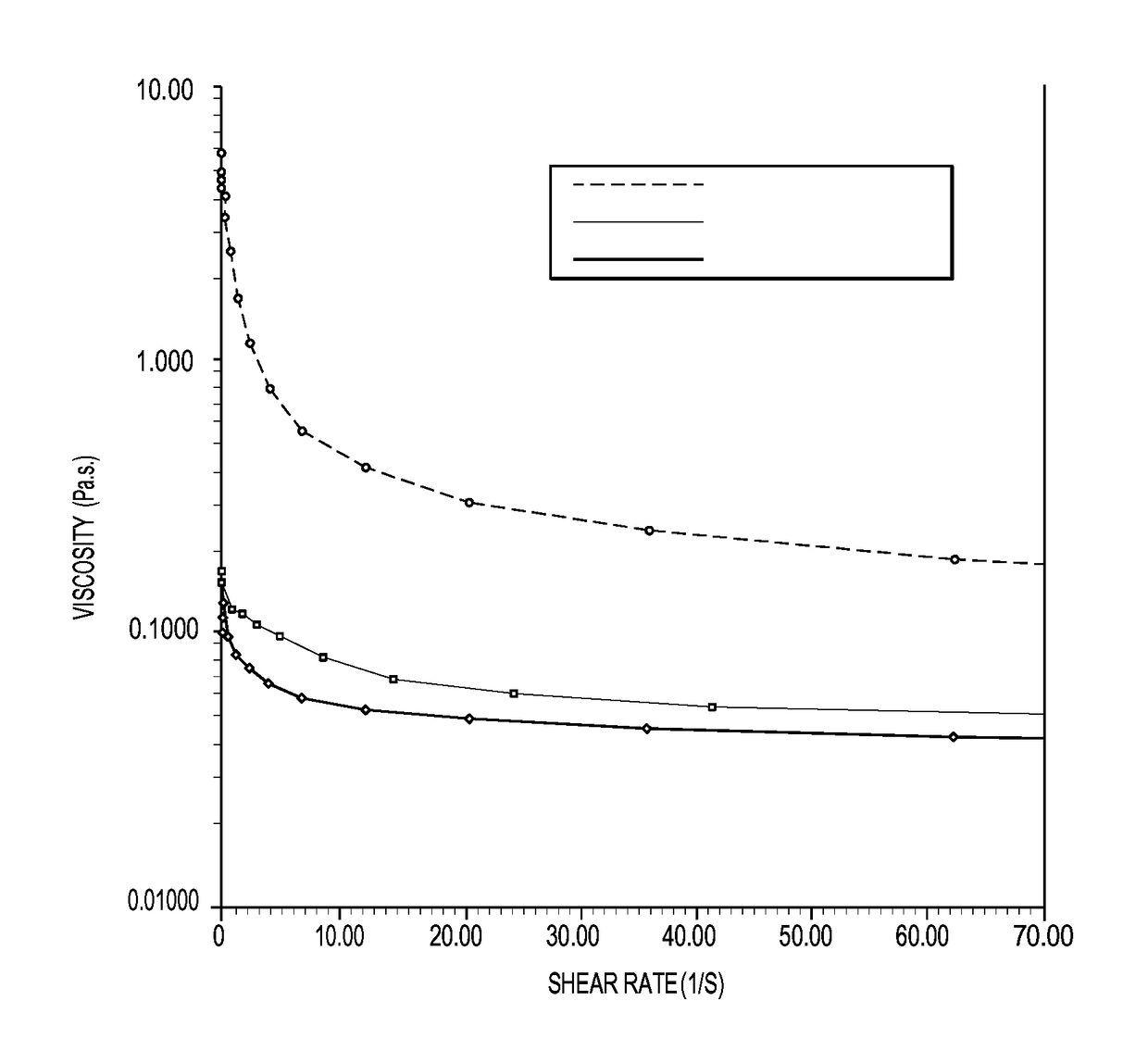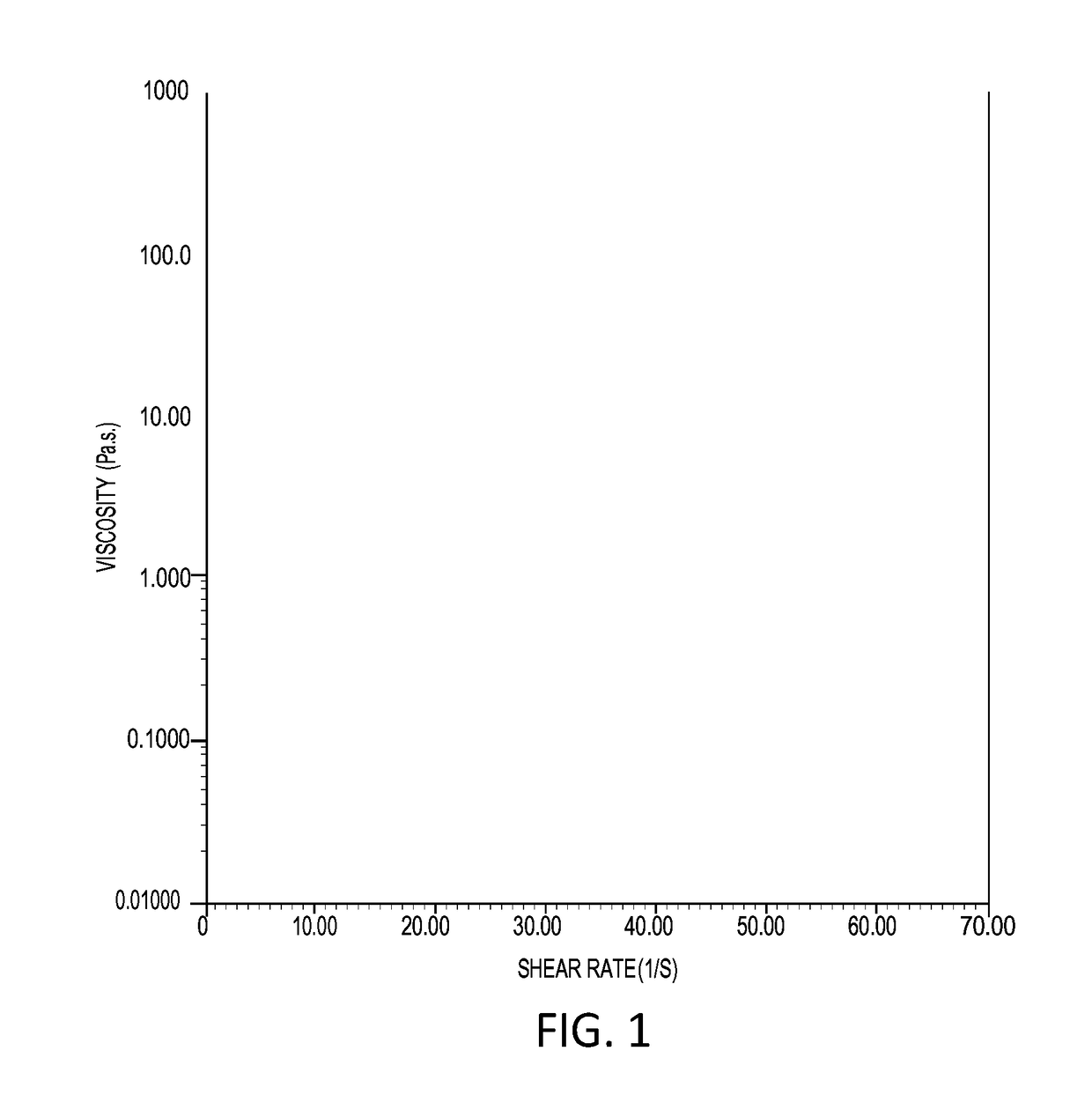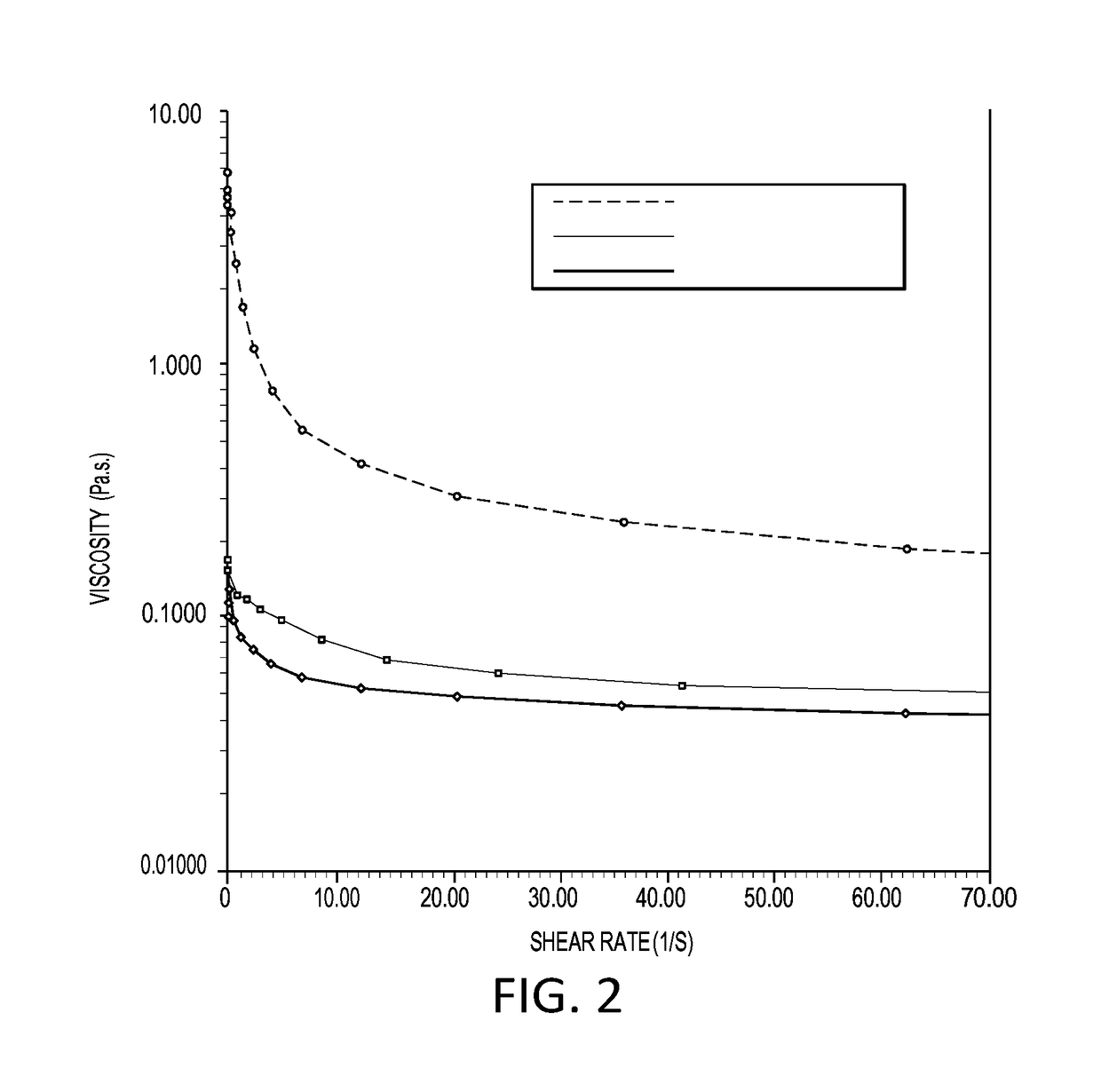Salt-tolerant, thermally-stable rheology modifiers
a rheology modifier and salt-tolerant technology, applied in the direction of chemistry apparatus and processes, well accessories, sealing/packing, etc., can solve the problems of low yield, low rheological properties, and low rheological properties, and achieve high yield and high gel strength and suspending ability, excellent compatibility, and high yield point
- Summary
- Abstract
- Description
- Claims
- Application Information
AI Technical Summary
Benefits of technology
Problems solved by technology
Method used
Image
Examples
example 1
nionic Poly(AMPS) as Dispersant
[0145]To a 1 L 4-neck round bottom flask, equipped with water bath, thermal couple, mechanic stirrer and nitrogen inlet and outlet, was added 85 g 2-acrylamido-2-methyl propanesulfonic acid (AMPS acid), and 517 g deionized water, the mixture was purged with N2 at 40° C. for 30 min, 0.1758 g Ammonium Persulfate dissolved in 20 g deionized water was added in batches within 1 hour. The reaction was maintained for 19 hrs at 40° C. to obtain viscous poly (AMPS). A 13.7% by weight actives solution of polyacrylamidomethylpropane sulfonic acid was recovered. The polymer had a Mw of 2,680,000-3,450,000 by GPC.
example 2
M / AMPS Copolymer by Dispersion Polymerization
[0146]To a 1 L resin reactor, equipped with water bath, thermal couple, mechanic stirrer and nitrogen inlet and outlet, was added 10.60 g NaOH dissolved into 56.17 g deionized water. 54.25 g AMPS acid was slowly added into the reactor and control the temperature below 30˜40° C. After AMPS acid was completely dissolved, 39.97 g acrylamide (+98%), 250 g deionized water, 53.42 g of 12.3% solution of polyacrylamidomethylpropane sulfonic acid having been prepared in a manner similar to example 1 with a Mn of 280,000, Mw of 2,700,000 were added into the reactor, 50% NaOH was dropwise added to the above solution to adjust the pH value to 9 (in the range of 7-9). 125 g ammonium sulfate was added in the mixture. The above mixture was heated to 40° C. and purged with nitrogen for 30 minutes. 0.2095 g ammonium persulfate was dissolved in 20 g DIW and dropwise added into reactor within 90 minutes. Polymerization begins after 20 minutes and the soluti...
example 3
e AM / AMPS / Alkyl Acrylate by Dispersion Polymerization
[0147]To a 1 L resin reactor, equipped with water bath, thermal couple, mechanic stirrer and nitrogen inlet and outlet, was added 10.75 g NaOH dissolved into 56.12 g deionized water. 54.27 g AMPS acid was slowly added into the reactor and control the temperature below 30˜40° C. After AMPS acid was completely dissolved, 40.66 acrylamide (+98%), 300 g deionized water, 61.61 g of 13.7% solution of polyacrylamidomethylpropane sulfonic acid having been prepared in a manner similar to example 1 with a Mn of 522,000, Mw of 3,500,000 were added into the reactor, 50% NaOH was dropwise added to the above solution to adjust the pH value to 9 (in the range of 7-9). 135.63 g ammonium sulfate and 2.03 g Ageflex FA68 (mixture of hexadecyl acrylate and stearyl acrylate) was added in the mixture. The above mixture was heated to 40° C. and purged with nitrogen for 30 minutes. 0.1975 g ammonium persulfate was dissolved in 20 g DIW and dropwise added...
PUM
 Login to View More
Login to View More Abstract
Description
Claims
Application Information
 Login to View More
Login to View More - R&D
- Intellectual Property
- Life Sciences
- Materials
- Tech Scout
- Unparalleled Data Quality
- Higher Quality Content
- 60% Fewer Hallucinations
Browse by: Latest US Patents, China's latest patents, Technical Efficacy Thesaurus, Application Domain, Technology Topic, Popular Technical Reports.
© 2025 PatSnap. All rights reserved.Legal|Privacy policy|Modern Slavery Act Transparency Statement|Sitemap|About US| Contact US: help@patsnap.com



